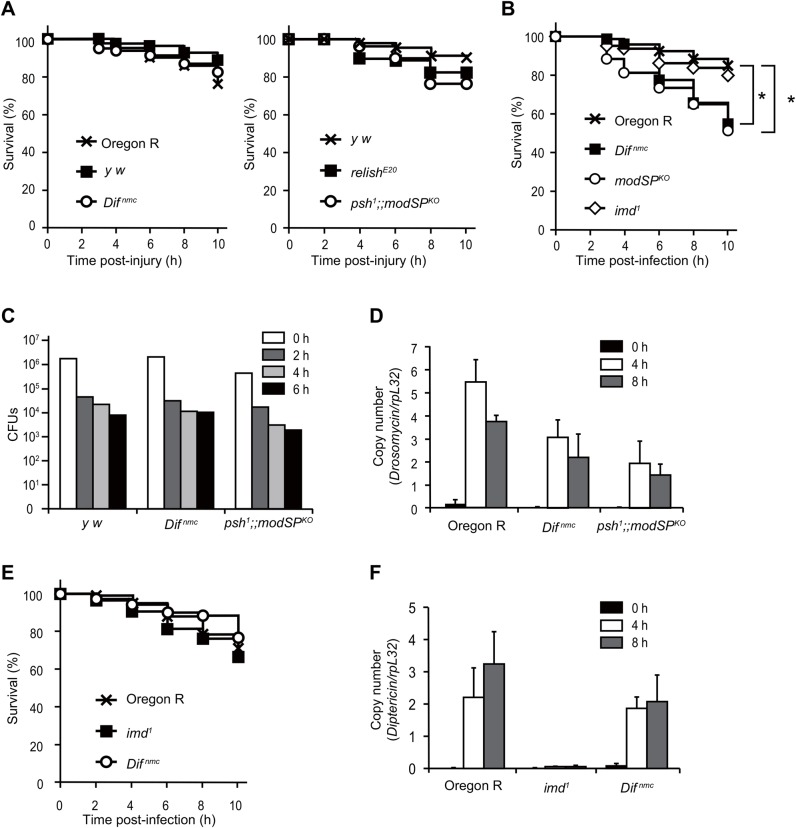Fig. 1.
Systemic infection in Drosophila larvae by septic injury with a fine tungsten needle. (A) Survival analysis of larvae upon clean injury. Oregon R wild-type larvae, wild-type control y w, Toll pathway mutant Difnmc, psh and modSPKO double mutant, and the IMD pathway mutant relishE20 were used. (B) Survival analysis of larvae upon septic injury with S. saprophyticus. Larvae of Oregon R, Difnmc, modSPKO and imd1 mutant were used. (C) Colony forming unit (CFU) assay before (0 h) and after septic injury with S. saprophyticus at the indicated time points. Larvae of y w, Difnmc, and psh1 and modSPKO double mutant were used. (D) Real-time qPCR analysis of antimicrobial peptide Drs expression upon septic injury with S. saprophyticus at the indicated time points with larvae of Oregon R, Difnmc, and the psh1 and modSPKO double mutant. (E) Survival analysis of larvae upon septic injury with Ecc15. Larvae of Oregon R, Difnmc, modSPKO and imd1 mutants were used. Each survival curve is representative of at least two independent experiments of 60 larvae each (A,B,E). P-values were calculated using the log-rank test. (F) Real-time qPCR analysis of antimicrobial peptide Dpt expression upon septic injury with Ecc15 at the indicated time points with larvae of Oregon R, Difnmc, and imd1 mutants. Data are representative of more than two independent experiments performed in 20 larvae (C,D,F) (*P<0.05).

